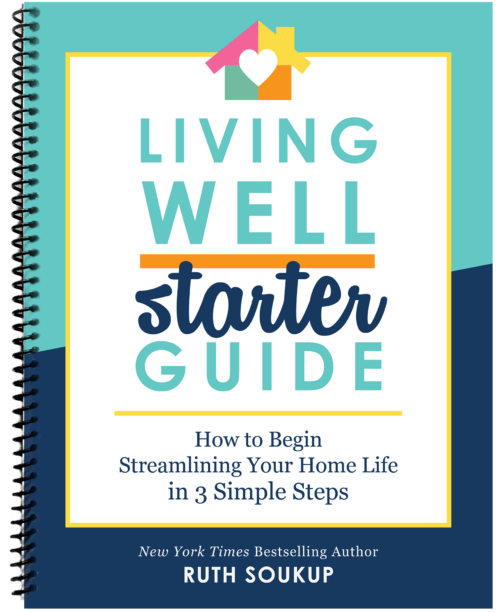Wish you could afford private school? But your limited budget is stopping you. These seven smart strategies can help you afford private school on a budget.
Several months ago I shared the news that my husband and I had decided to send our girls back to school rather than homeschool. It was an incredibly difficult decision to make, for so many reasons, but ultimately we decided that–at least for this year–a small private school just a few blocks from our home was the right fit for our family.
Although we were very nervous at first, we honestly couldn’t be happier with the school. The classroom sizes are small—there are only ten children in my oldest daughter’s combined 2nd/3rd grade class—and every child is treated like an individual. With longer school days, fewer kids to compete for the teacher’s attention, and no standardized testing, they have time for both music class and Spanish three times a week, as well as regular PE and even a private violin lesson each week. Although we were afraid she might again wilt like she did in Kindergarten,our daughter has instead blossomed under the guidance of a firm-but-loving teacher who expects nothing less than excellence. It is such an answer to prayers!
While private school may seem like an extravagance, it can actually be far more affordable than you might think. When we began looking into school options we were very surprised at not only the wide range of tuition costs between schools, but the number of scholarships, tax programs, and grants available.
If you are considering a change in your child’s education, these seven practical and field tested options for affording private school on a tight budget are a great place to start.
1. Choose Carefully
Not all private schools are created equal, and tuition rates can vary between schools as much as $5,000-20,000 a year. A more expensive school does not necessarily mean a better school, although it might mean a fancier building, more amenities, and (possibly) a snootier student body.
Take the time to shop around in your quest for the right school. Tour the grounds, talk to the principal, talk to the teachers—particularly the one that will teach your child—and observe them in the classroom, if possible. Pay close attention to where tuition money is being spent. Classrooms and hallways should be bright, cheery, and clean, but needn’t be overly fancy. Cherry paneled walls are not essential for a quality education. Remember that the funds for every bell and whistle have to come from somewhere, so make sure that what the school offers is really what your child needs.
Here are some good questions to ask during a school visit:
- How much time is spent on each subject?
- What type of fine arts & language courses does the school offer?
- What is the school’s educational philosophy or mission?
- How does the school handle discipline?
- What kind of technology does the school offer?
- What sort of library resources are available?
- How much homework do children receive?
- What sort of extracurricular activities does the school offer?
- What sort of math & science programs does the school offer?
- Are uniforms required? If so, how much do they cost?
- What additional fees and costs should be expected?
- What are the tuition costs?
- Are there tuition discounts for multiple children?
- Are volunteer hours required?
- What are the schools greatest accomplishments?
- What are the schools greatest challenges?
- What is the turnover rate for teachers?
- What time do classes start and end?
- Is there transportation or busing available for students?
- Are payment plans available?
- Are scholarships available?
- Do you offer any sort of tuition reimbursement programs
2. Apply for Private Scholarships
While scholarship options do vary significantly from state to state, there are a number of nationwide scholarship options available, including those from the Commonweal Foundation (offering scholarships to partner Christian schools), A Better Chance (offering scholarships to low-income children of color), the Jack Kent Cooke Foundation (offering scholarships to low-income high school students), and The Children’s Scholarship Fund (offering scholarships to low-income students in grades K-8).
In addition to these programs, most private schools also offer a large variety of in-house scholarships for students that can help greatly reduce tuition costs, and this is one of the most important questions to ask when considering the different schools in your area. There are even a handful of private schools across the country that offer free tuition!
Additionally, many churches offer tuition assistance to member families who wish to send their children to schools within the same religious affiliation. If you are a member of a local church, definitely inquire with your pastor or church administrator to find out if this is an option.
3. Apply for State Voucher Programs
There are currently no federally funded school voucher programs (though you can always write your Congressman to request this!) but a few states, including Florida, Utah, Arizona, Oklahoma, Louisiana, Mississippi, Wisconsin, Indiana, Ohio, Georgia, and Washington D.C. have established some type of voucher program that provides funds to either low-income or special needs families (or both) for attending the private school of their choice.
The Alliance for School Choice has assembled a comprehensive list with detailed information about the different state vouchers currently available.
If your children are younger, many states also offer free preschool programs at the private school of your choice. Our youngest daughter, who is four, currently attends VPK (Voluntary Pre-Kindergarten) at the same school as her sister, but her tuition is paid for by the State of Florida. While Florida’s program is one of the best in the country, more than 40 states currently offer some sort of free or reduced-cost Pre-K program. Your local Pre-K school should be able to provide you with more information on your own state’s program.
4. Take Advantage of State Tax Credit Programs
Several of these same states, including Florida, Utah, Arizona, Oklahoma, Indiana, and Georgia, as well as Iowa, Pennsylvania, New Hampshire, Rhode Island, Virginia, and North Carolina also have set up Tax Credit programs to give parents paying for private school a break on their taxes.
Again, the Alliance for School Choice has also assembled a comprehensive list of all the different state tax programs currently available. If your state is not currently on this list, contact your local state representative to find out how to get a tax program initiated.
5. Negotiate Tuition Rates
It is a little known fact that private school tuition rates are rarely set in stone, especially for schools that may be eager to boost their enrollment rate. During your search for schools, be sure to inquire as to whether there is any wiggle room within the published tuition rates. Many schools have a “cushion,” with room to adjust rates as necessary, particularly if you are thinking of sending more than one child to the school. There may also be a credit available in exchange for a certain number of volunteer hours, so be sure to inquire about this possibility as well!
In addition to negotiating tuition rates themselves, consider negotiating your payment schedule. A lump sum payment of $4,800 is overwhelming for most families, but a 12-month schedule of $400 per month might be more manageable, especially when incorporated into a monthly budget.
6. Take Advantage of Rewards Programs
One way to help offset the tuition costs that may not be covered by grants or scholarships is to take advantage of rewards programs in your everyday spending. Many private schools participate in some sort of tuition reimbursement incentive program (also called TRIP or SCRIP) that gives tuition reimbursement when you purchase gift cards through the school.
Here is how it works: Parents (or even grandparents and other friends and family members) may purchase a gift card or gift cards for participating gas stations, restaurants, retail stores, or even grocery stores. The cards are usually purchased directly from the school. The participating retailers then give a certain percentage of the gift card amount back to the school, and the school passes those savings (usually between 5-10%) on to the family in the form of tuition reduction. Thus, say you normally spend $400 per month on groceries and another $200 in gas. If you purchase gift cards for your gas station and grocery store you could get up to $60 off your tuition for that month.
TRIP programs vary a lot from school to school, so be sure to ask what sort of reimbursement programs are offered when you do your school visit.
Credit card reward programs that offer cash back on purchases can also be a good way to earn money back on everyday purchases. But please remember that running a credit card balance and paying interest will negate any rewards earned, so ONLY use this if you are 100% diligent about paying off the balance in full each month!
7. Get Family Assistance
You may want to consider having a sit down with your parents, grandparents, or any other close-knit family members to see if they might be willing to assist with private school tuition. Many grandparents or even aunts and uncles are eager to shower their grandchildren or nieces and nephews with toys and clothes, but don’t always think about offering something more long lasting, such as contributing towards a private school education.
To Summarize, here are some ways to afford Private School on a budget:
- Choose Carefully
- Apply for Private Scholarships
- Apply for State Voucher Programs
- Take Advantage of State Tax Credit Programs
- Negotiate Tuition Rates
- Take Advantage of Rewards Programs
- Get Family Assistance
Obviously, every family’s financial situation is different and this may not be a viable option for everyone, but even if family members are not able to contribute regularly, you can explain that you would be very grateful for tuition assistance in lieu of birthday or Christmas gifts. If they are not comfortable with paying for school itself, perhaps they would be willing to help with other expenses or needs, such as transportation (if the school doesn’t have a bus system) or uniform costs.
* * *
Private school may not be for everyone, and is certainly NOT the only option when it comes to providing a great education for your child! Depending on your school district, there may be charter schools, virtual schools, and or other great public school options available. Furthermore, homeschooling can also be a very cost-effective alternative to traditional school, and great sites like Free Homeschool Deals and How to Homeschool for Free help prove just how affordable it can be. That said, if you are looking to make a change in your child’s schooling, don’t automatically rule out private school because you think it is too expensive. It may take a little effort to come up with a plan, but it could also be more affordable than you know!
Other helpful resources:
- 10 Smart Ways to Save on Back to School
- 5 Ways to Simplify Your School Routine
- 3 Back-to-School Budget Lessons Every Kid Needs to Learn
PIN FOR LATER:
TAKE BACK CONTROL OF YOUR HOME LIFE
 Ever feel like you just can't keep up? Our Living Well Starter Guide will show you how to start streamlining your life in just 3 simple steps. It's a game changer--get it free for a limited time!
Ever feel like you just can't keep up? Our Living Well Starter Guide will show you how to start streamlining your life in just 3 simple steps. It's a game changer--get it free for a limited time!
If you love this resource, be sure to check out our digital library of helpful tools and resources for cleaning faster, taking control of your budget, organizing your schedule, and getting food on the table easier than ever before.













Do you need any Financial Help such as Loan? if yes email us at (Brent.timmons@ ymail. com) for more details…
I found your post while searching for funding options for private school for my profoundly gifted son who is also on the autism spectrum. Our local public school is seriously failing him. I found a local school for gifted kids which seemed like a perfect fit for him until the tuition talks came up. $25k per year just to get in the door. That doesn’t include any extra fees, lunch, field trips, etc!! And they don’t offer any scholarships, reductions or assistance. I’m guessing they fall in to the “snooty” column and want to keep it that way.
Our public school system is failing us and I have recently decided to stay home to take care of my mother in law who has Alzheimers. With our income so drastically changed, I’m not sure we can swing a private school, but I will sell a kidney to make it happen if I have to! My daughter is really spiraling downward in public high school. It’s horrifying what happens on a daily basis and how our kids are suffering because teachers aren’t supported and because of that school is just a holding cell. I need help fast!
Yes, it is VERY expensive, but they have a zero tolerance policy for bullying that’s actually enforced – very strictly – and a code of conduct that applies to their actions both in and out of school. I can not imagine placing my kid to another school.
Thank you so much for your post. I learned a lot today. I was searching the Web about a private school for my 2 going to be 3 years old & found your post. Thanks again, this is incredible. That was very helpful.